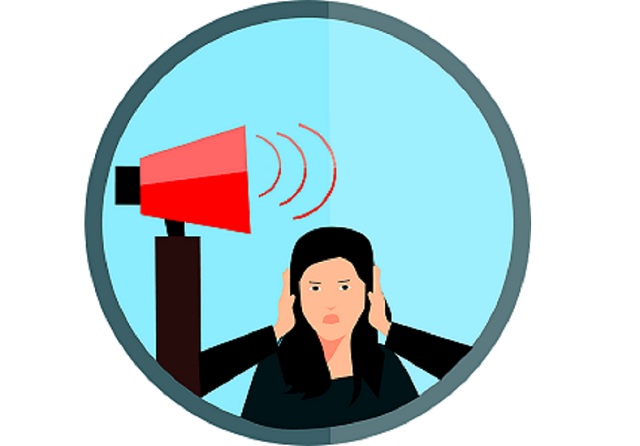When we talk about pollution, we immediately assume that it has to do with air or water pollution. You get a mental image of a factory chimney or an exhaust vent of a truck, or you imagine someone pouring something into the river.
The thing is, however, that pollution simply means disruption of the environment and this is something that can be done in other, subtler ways, as well. For instance, you could produce too much light in the evening, when the animals are supposed to go to sleep, thus completely ruining their day-night cycle. This is the so-called light pollution and it’s especially common in big cities.
You can also make too much noise. In that case, we’re talking about noise pollution, which can be just as harmful. Fortunately, it can be made better with the help of green acoustics. Here’s what you should know about the subject matter.

Table of Contents
1. The dangers of noise pollution
Noise pollution refers to unwanted or harmful sounds that disrupt the environment or human health. It can come from traffic, industrial activities, or even loud public spaces. Over time, exposure to excessive noise can cause stress, hearing loss, and other health issues, making it a growign concern worldwide.
Wildlife is highly sensitive to noise pollution, with some species suffering severe consequences. Loud environments can interfere with animal communication, migration patterns, and even hunting behavior. Birds, marine life, and terrestrial mammals are particularly vulnerable, and in some cases, noise pollution contributes to the decline of species populations.
Noise pollution’s impact on wildlife can vary (some animals may experience stress, while others face disruptions in critical activities like reproduction or feeding). For endangered species, these disturbances can be catastrophic, hastening extinction by making it difficult for them to survive in noisy, human-dominated landscapes.
Road traffic, industrial sites, airports, and even urban construction are major sources of noise pollution. Green acoustics offers innovative solutions to combat these sources by using sustainable materials and designs that absorb or deflect sound. These eco-friendly strategies help mitigate noise while reducing environmental harm, making them a win-win for all.
2. Understanding green acoustics
Eco-friendly acoustic solutions are a growing field focused on reducing noise pollution through environmentally friendly materials and methods. It emphasizes the use of renewable or recycled resources to manage sound in a way that is both effective and eco-conscious, blending sustainability with noise reduction to create healthier environments.
A key principle of green acoustics is sustainability, where acoustic solutions are created with the environment in mind. Materials like recycled wool, PET felt, and bamboo absorb sound while minimizing environmental damage. By choosing eco-friendly alternatives, green acoustics help reduce reliance on finite resources.
Green acoustics aims to strike a balance between reducing noise and minimizing environmental harm. Traditional soundproofing materials can be effective but are often made from unsustainable or non-recyclable materials. Green acoustics offers alternatives that maintain sound control without the negative ecological footprint.
As people become more aware of their environmental impact, the demand for eco-friendly noise reduction solutions is growing. Green acoustics addresses this need by offering materials and techniques that provide effective sound management while being kind to the planet. This trend is particularly strong in unban planning and modern architecture.
3. Eco-friendly acoustic materials
Recycled wool and felt panels are popular choices in green acoustics for their natural sound-absorbing properties. These materials are made from repurposed textiles, reducing waste while providing excellent acoustic control. They are often used in both residential and commercial spaces to create quieter, more sustainable environments.
Bamboo is a fast-growing, renewable resource that has excellent acoustic properties. Its natural structure helps dampen sound, making it ideal for green acoustic panels and barriers. Bamboo is not only sustainable but also aesthetically pleasing, adding a natural touch to eco-conscious designs while efficiently managing noise.
Cork, harvested from the bark of cork oak trees, is a highly sustainable material with remarkable soundproofing capabilities. It’s lightweight, durable, and a great insulator, making it perfect for green acoustic applications. Its renewable nature, combined with its ability to block out sound, makes cork an ideal choice for eco-friendly project.
Hemp insulation is gaining popularity in green acoustics due to its sound-absorbing qualities and sustainable growth. Hemp grows quickly and requires fewer resources than other crops, making it an eco-friendly alternative for noise control. Its fibers naturally dampen sound, making it a versatile choice for soundproofing walls and floors.
4. Benefits of using sustainable acoustic solutions
By incorporating sustainable acoustic solutions, we reduce our reliance on non-renewable resources like plastic and fiberglass, which are commonly used in traditional soundproofing. Green materials like recycled textiles or plant-based fibers help lessen environmental damage and promote renewable resource use, contributing to a healthier planet.
Eco-friendly acoustic materials tend to have a lower carbon footprint compared to conventional options. Materials like bamboo or recycled PET waste require fewer resources and emit less CO2 during production. By choosing these green alternatives, you can significantly reduce the overall environmental impact of your building or project.
Sustainable acoustic solutions aren’t just good for the environment; they’re also better for human health. Unlike some traditional soundproofing materials that can release harmful chemicals, green options like cork or hemp are non-toxic. This leads to healthier indoor air quality, reducing the risk of allergies or respiratory problems.
Green acoustics plays an important role in sustainable construction by integrating eco-friendly noise management into the building process. Using recycled and renewable materials helps meet green building standards, contributing to certifications like LEED. This shift toward sustainability is crucial for creating more responsible, long-lasting infrastructure.
Wrap up
As noise pollution continues to pose challenges in urban and industrial environments, green acoustics offers a promising solution by combining sound control with environmental responsibility. By using sustainable, renewable materials like PET felt and cork, we can reduce noise pollution’s impact on human health and wildlife without further damaging the planet. As awareness grows, eco-friendly acoustics is becoming essential to modern design and urban planning. With the right implementation, green acoustics can contribute to a quieter, healthier, and more sustainable future for all.




